Hello~ We are Minze and Totoro from Taiwan!
Totoro:
Taking advantage of the clear and cool weather, we headed to the Aso crater to admire the wonders of nature. The scenery along the way was evenly divided between the azure sky and the lush green grasslands. Occasionally, we passed by Akaushi cattle grazing leisurely—an idyllic sight that, for someone from the city like me, feels like a utopia.
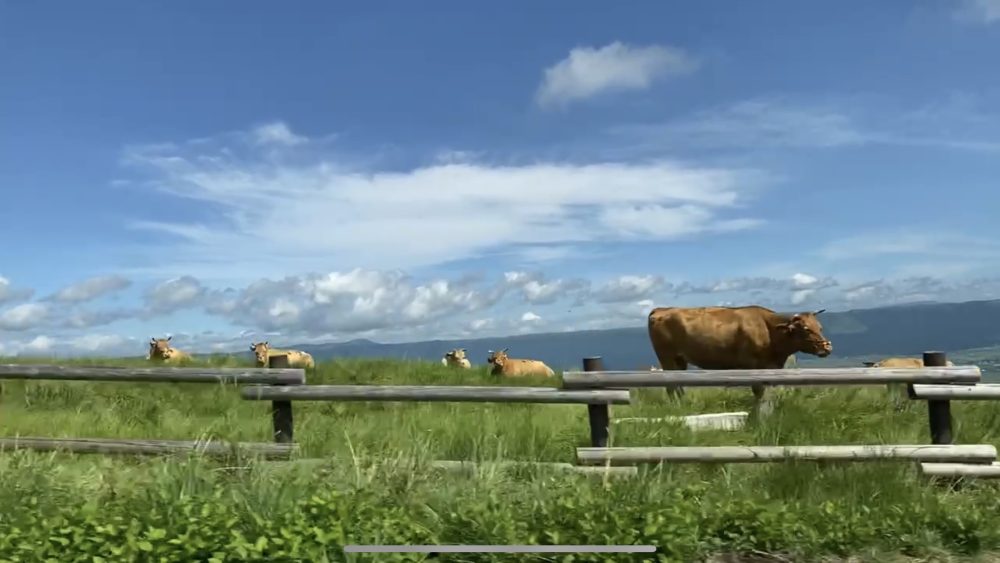
Mount Aso has a total of seven craters, and the park is divided into four areas, labeled A through D. The increasing intensity of the sulfur smell signaled that we were getting closer to our destination.
Looking down into the valley, thick smoke soared straight into the sky, eventually merging with the clouds. While the scene was both balanced and magnificent, it was also a reminder of the ongoing volcanic activity, instilling a deep sense of awe.
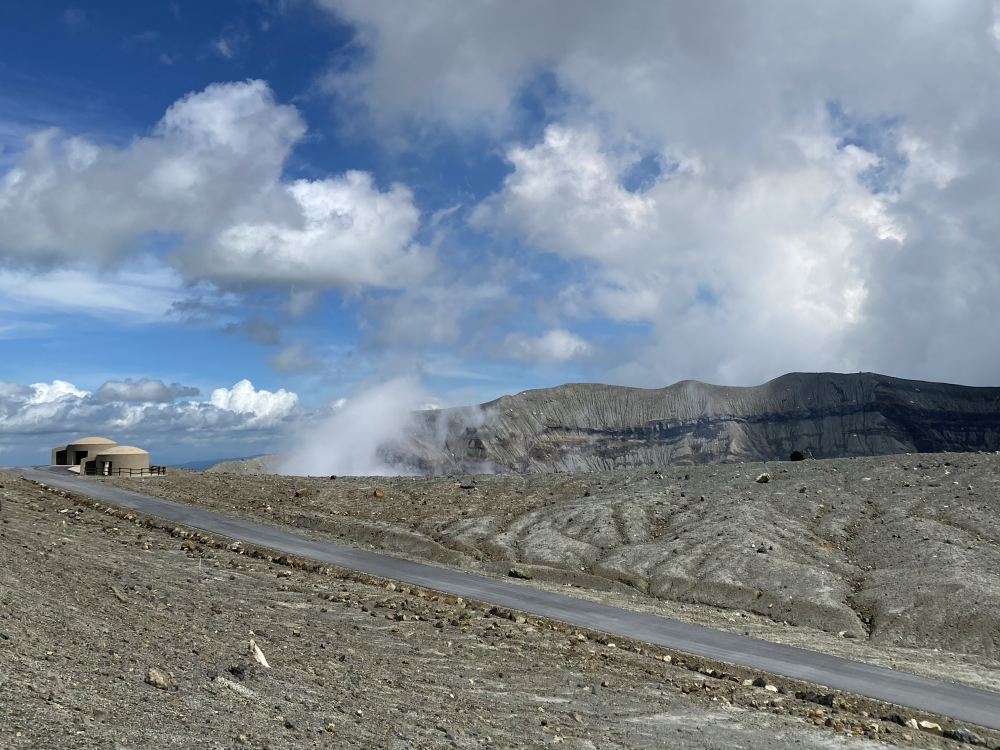
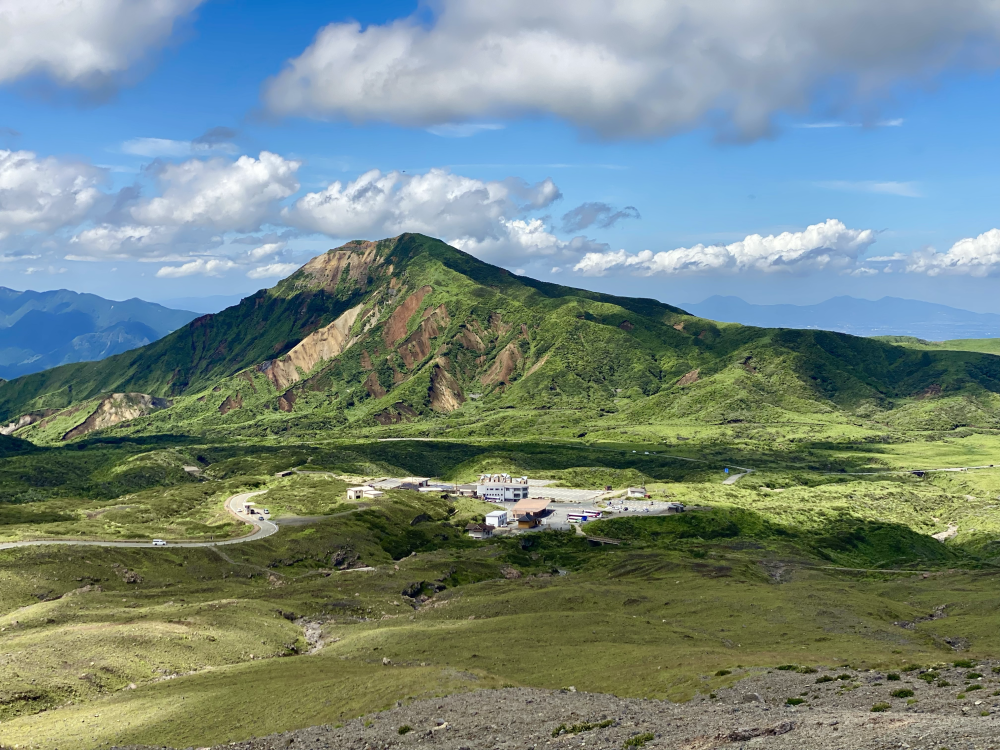
The Aso Volcano Museum is located opposite Kusasenri. The museum not only provides educational information about the formation and topography of volcanoes, but also displays volcanic ejecta, ash, and other materials for visitors to see up close.
Through actual models and computer animations, it recreates and simulates various volcanic scenarios. Though we had less than an hour to explore, it was a complete and immersive geological education.
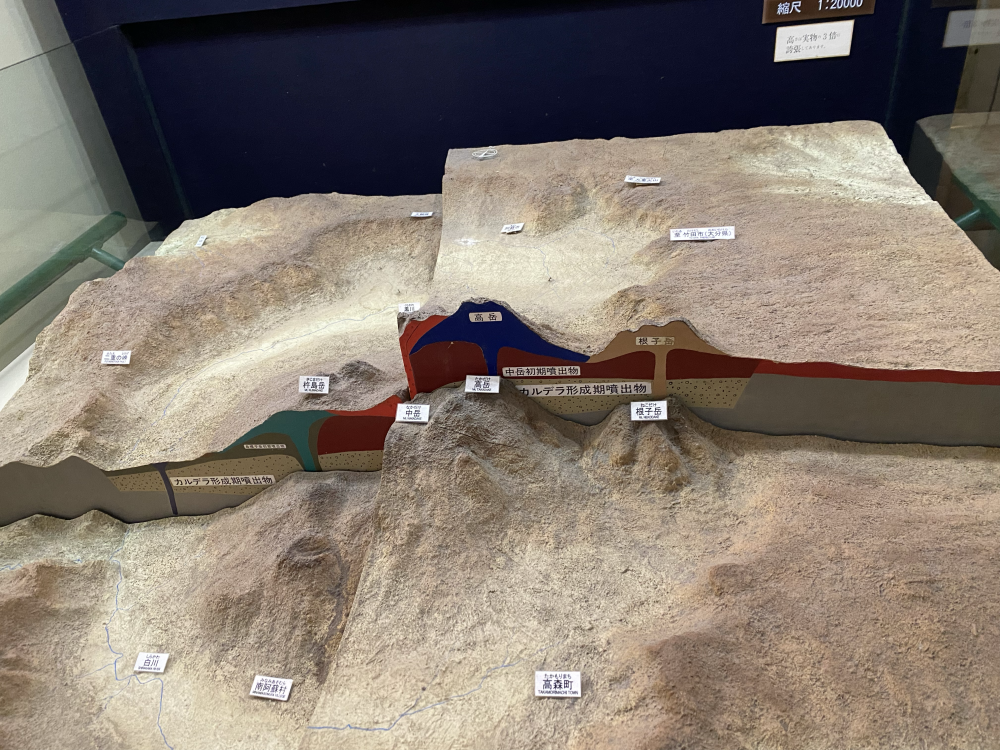
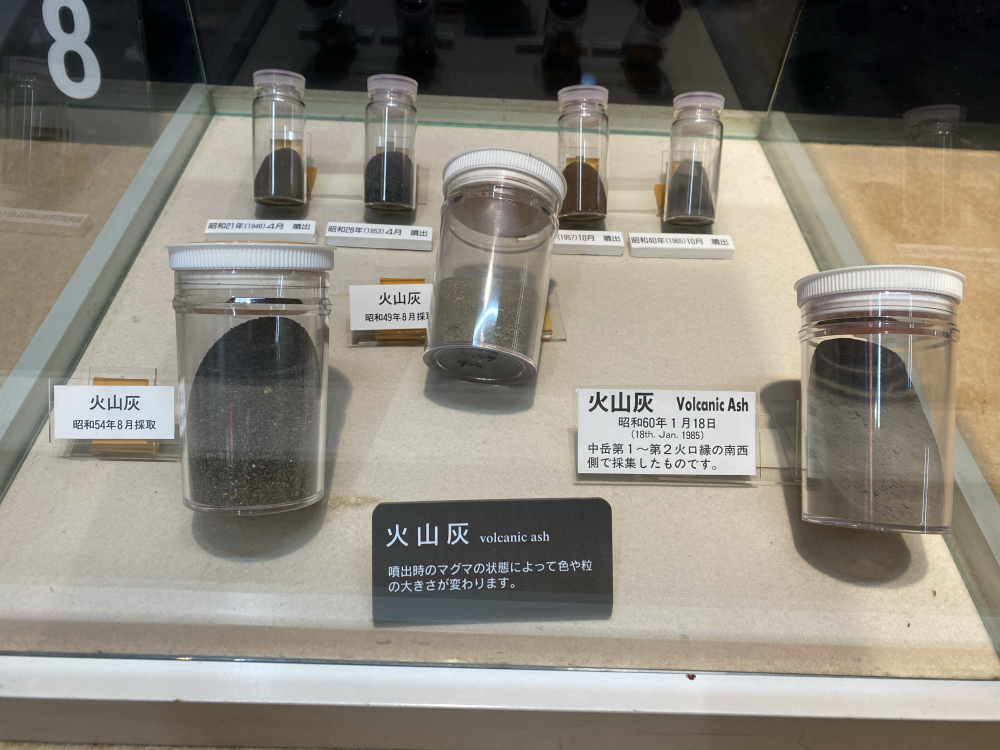
Around noon, we arrived at Kusasenri. The sun greeted us even more warmly than in the morning. The first thing we saw were several horses available for tourists to ride, followed by a road stretching all the way to the foot of the mountain. The path was smooth, flanked by endless grassy hills. In the distance, we could see layer upon layer of mountain ridges, filling us with a sense of tranquility and joy.
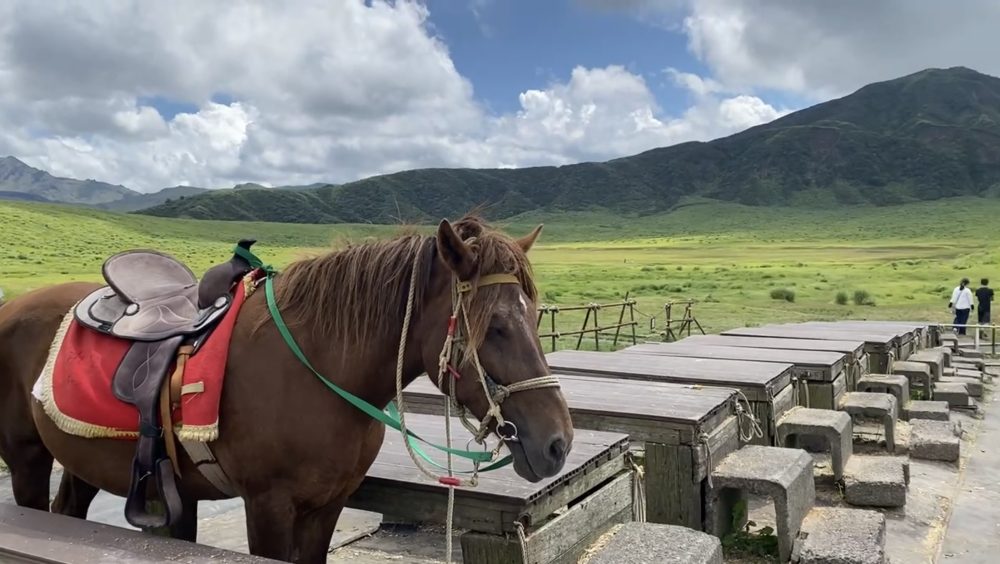
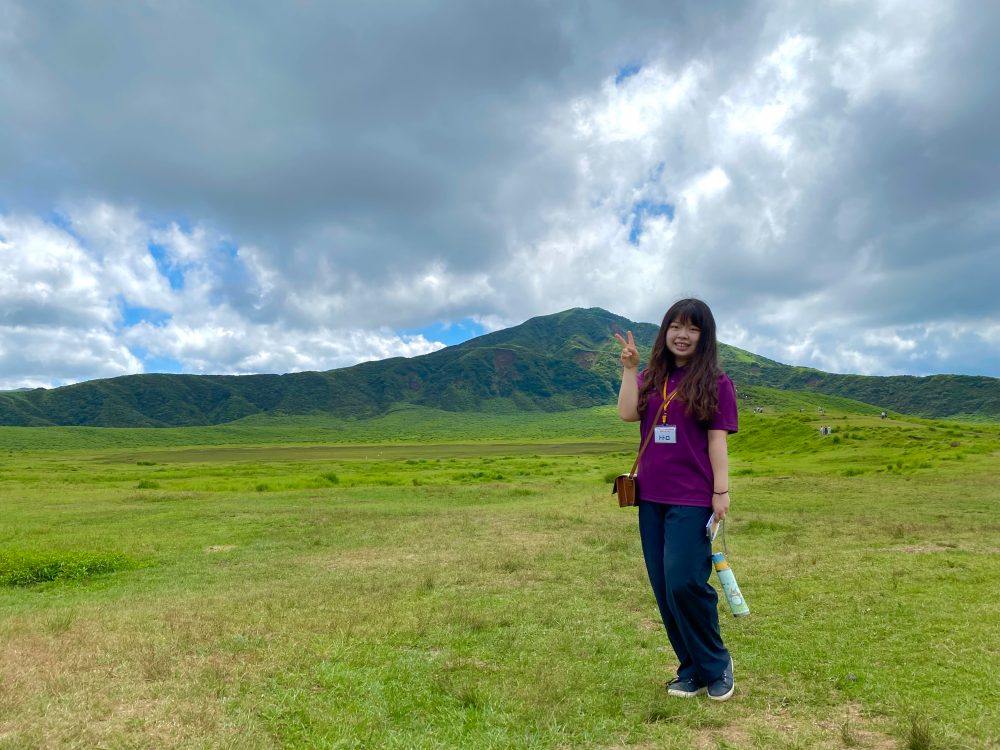
Minze:
Active volcanoes have always been both fascinating and dangerous. As soon as we got off the car, we could smell the volcanic fumes. The small, cute emergency shelters and the extremely acidic (pH value below 1, sometimes even negative) volcanic lake emitting blue whale clouds create a horizon-like effect.
The vast grasslands, where you can’t see the ocean, offer a scene that between reality and fiction. Access to the park depends on the amount of volcanic gas present. Standing on the edge of the crater with a phone in hand, this view is something no screen can truly capture.
It’s said that Mount Fuji has an activity cycle of 100 years, while Mount Aso ranges from 1 to 2 years to several decades. An active volcano is defined as having volcanic activity within the last 10,000 years; this was originally set at 2,000 years but was later revised by scientists.
Humanity is so small, even the limits of volcanoes are beyond our calculation. If one were to travel to Earth a hundred years from now, you might not find a high-tech AI world but a land ravaged by volcanic eruptions. This volcanic knowledge comes from the Aso Volcano Museum, though currently, only part of the information is available in both Chinese and English. We will work to improve it all!
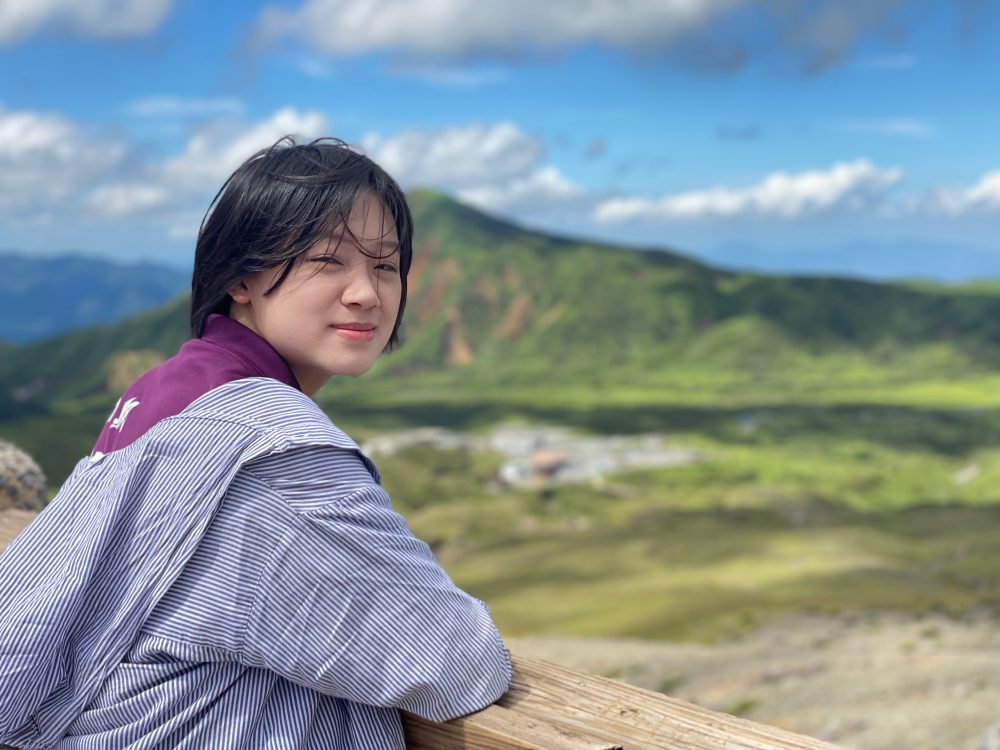
⚠️ Grazing Horses Are Dangerous! ⚠️
For your safety at Kusasenri, the following activities are strictly prohibited.
Horses are large, powerful animals and may behave unpredictably. Please be extremely cautious of the following:
-
Do not approach the horses.
Touching or getting too close to the horses is very dangerous. Please do not attempt to touch them under any circumstances. -
Do not make sudden movements or loud noises.
Horses are easily startled. Avoid surprising them with abrupt movements or loud sounds. -
Do not feed the horses.
Feeding the horses is strictly prohibited. To protect their health, please refrain from offering any food.
Please follow these rules to ensure your safety and the well-being of the horses.
We appreciate your cooperation.

